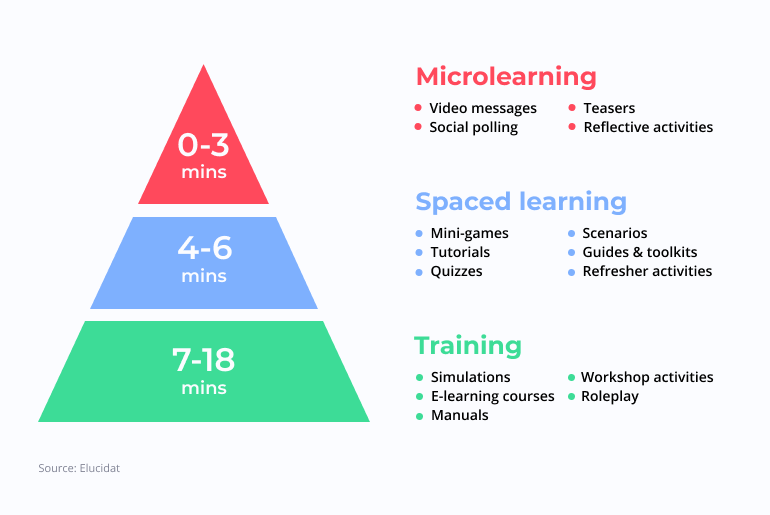Moving classes online at short notice is quite a challenging feat. But once the teaching & learning process has begun, maintaining student engagement remotely becomes the next big challenge.
While the tech side of the equation is essential for effective remote learning, we’d like to offer educators a different perspective on student engagement. Consider this: what if knowing how to get students’ attention means focusing on pedagogy, and not just fancy online learning tools?
As the University of California in Merced puts it, student engagement is crucial for ensuring your students understand what you’re teaching. From that perspective, we can see that the key to engagement lies closer to the pedagogical side of things rather than just the tech.
In this article, we’ll start by exploring some student engagement strategies.
This begins with establishing a consistent and robust presence among your students by setting clear goals and expectations. Then, we’ll help you set yourself apart by adding a personal touch to each of your lessons, something that’s easily overlooked in online learning. Finally, we’ll help you make interactive learning a top priority in your online classroom.
Let’s get started!
Establishing Your Presence and Being Consistent
Firstly, the basics. When trying to facilitate student engagement, educators need to first make sure that they are seen and heard clearly. This might include positioning your camera at your eye-level and using a headset with a decent microphone. Remember: online, students can’t see as many of your non-verbal cues as they could in a physical classroom.
Therefore, there’s more reliance on what they can see and hear through their devices. While you may not have a fixed dress code while working from home, putting on your ‘work clothes’ regardless is an excellent way to manage their expectations. Seeing their teacher dressed up and ready to go indicates to a student that you are there to teach, and students are there to learn.
Once the audio-visual element is established, it helps to set some ground rules. For example, an excellent way to avoid overlapping chatter is to agree that only one person can speak at a time. Should a student want to interject, perhaps they could indicate it in the chat box before you call on them to speak. As you might expect, dozens of students talking at the same time in a Zoom class would be pure chaos. A few ground rules that you establish with your students ahead of time would keep the lessons running smoothly.
On top of that, it’s a great idea to provide students with personalized attention. Some educators still hold optional ‘office hours’ when students can log on and ask them anything they want in a Q&A session. This is not only good for learning, but it also a way to pay attention to students and their emotional wellbeing.
Another way to encourage interactions outside of lesson hours is through collaborative side projects and assignments. Free tools like Google Docs are an excellent way for students to work together on those assignments in their free time and stay engaged with their peers. Remotely maintaining academic honesty in those assignments is also easy for teachers who can assess any submitted work using plagiarism checking software.
Adding a Personal Touch to Every Lesson
The easiest way to lose student engagement is by teaching a very impersonal class.
Some educators sadly forget that they are just a face on the student’s screen, just like the others that they may see on Youtube or elsewhere. If you’d like to make the teacher-student interaction feel real to your students, your online lessons need to feel like it’s personal.
The first step is to ensure that students view your classes live, whenever possible. Interacting live with students one-on-one through remote learning communication is another effective way to provide personal attention to students who might need it.
Just as you would in a real classroom, a simple way to personalize the experience is to ask and answer questions. Calling a student by name and giving them a chance to answer questions is an effective way to engage them, one that’s proven to work both in-person and online. Hosting quizzes or surveys also has the same effect. By diversifying the activities that you choose, you can maximize your students’ attention span during online classes.
 Making Interactive Learning Your Top Priority
Making Interactive Learning Your Top Priority
One of the ‘golden rules’ of student engagement in remote learning is that the learning experience needs to be interactive. Gone are the days of ‘chalk and talk’ or purely one-way lectures. Your students will be more engaged with you and your lesson when they are engaged with directly, either by teachers or by their peers.
Thankfully, interactivity is one area where the tech offers a lot of advantages. Teleconferencing platforms like Zoom and others already have built-in features designed to encourage the participation of everyone involved. A great example is Zoom with its Breakout Rooms feature. With this feature and others like it, teachers can divide their students into groups for activities and allow you to manage them all simultaneously. In doing so, students can engage in cooperative learning communication with each other, making the entire experience much more exciting for them. Not only will they be learning from you as their teacher, but they’ll also be learning from each other.
Still, the interactions between people aren’t the only factor in keeping students engaged. Students also need to interact with the subject matter itself, and this is done through the learning materials that they use. As their teacher, you can distribute useful course materials and assign reading tasks before the next lesson. That way, students can interact with the content at their own pace before the class. For added benefit, try and use the online materials that are accessible through your institution’s library. Not only will this encourage students to engage more with the subject matter, but it’ll promote student engagement with their school and its facilities, even if only remotely.
As educators, it’s always a good idea to keep ourselves informed. To stay up-to-date with issues like this and many others affecting teachers worldwide, be sure to sign up for the Unicheck blog.





